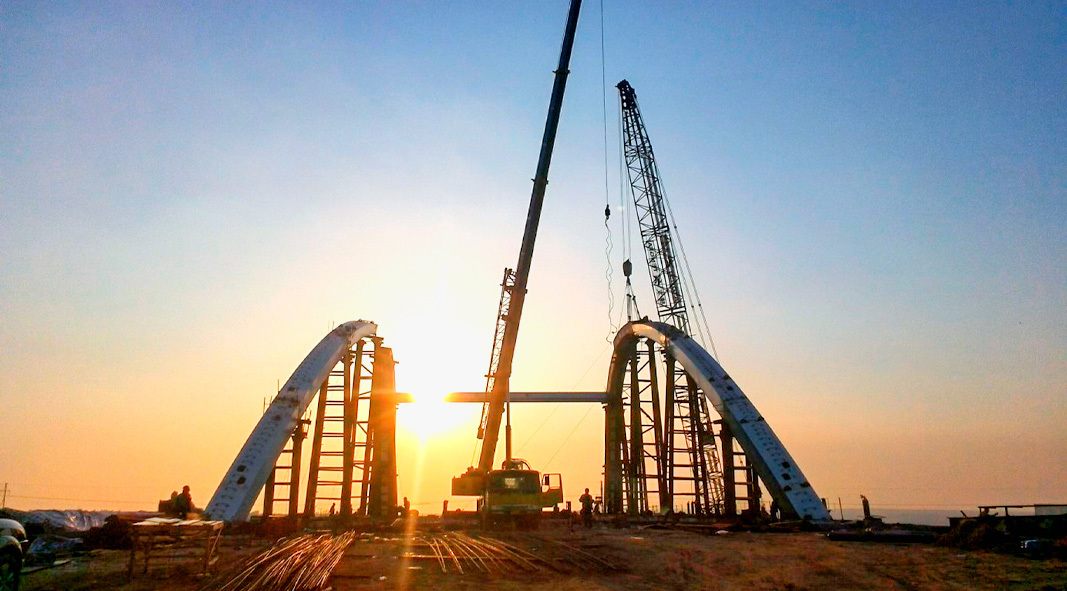Innovative Designs for Quality Steel Truss Pedestrian Bridges: A Comprehensive Guide
May 03,2025

Innovative Designs for Quality Steel Truss Pedestrian Bridges
Table of Contents
1. Introduction to Steel Truss Pedestrian Bridges
2. Understanding the Structure of Steel Truss Bridges
3. Benefits of Steel Truss Design for Pedestrian Bridges
3.1 Durability and Longevity
3.2 Aesthetic Flexibility
3.3 Cost-Effectiveness
4. Innovative Design Trends in Steel Truss Bridges
4.1 Green and Sustainable Materials
4.2 Integrating Technology in Design
4.3 Adaptive Reuse of Existing Structures
5. Case Studies of Successful Steel Truss Bridges
6. Construction Techniques for Quality Steel Truss Bridges
6.1 Modular Construction Methods
6.2 Advanced Fabrication Techniques
7. Future Trends in Steel Truss Pedestrian Bridges
8. Frequently Asked Questions (FAQs)
8.1 What are the key advantages of steel truss pedestrian bridges?
8.2 How do steel truss bridges compare to other bridge types?
8.3 What maintenance is required for steel truss bridges?
8.4 How do design innovations impact the safety of pedestrian bridges?
8.5 What role does sustainability play in modern bridge design?
9. Conclusion
1. Introduction to Steel Truss Pedestrian Bridges
In urban environments, pedestrian bridges serve as vital connectors, enhancing mobility while promoting safety. Among these structures, **steel truss pedestrian bridges** stand out due to their architectural elegance and structural integrity. This guide aims to explore innovative designs in steel truss bridges, showcasing their benefits, unique design trends, and practical applications.
2. Understanding the Structure of Steel Truss Bridges
Steel truss bridges consist of interconnected triangles that provide robust structural support. This design offers a lightweight yet strong frame capable of spanning considerable distances, making it ideal for pedestrian pathways. The unique geometry of trusses distributes weight evenly, allowing for efficient use of materials and enhanced stability.
3. Benefits of Steel Truss Design for Pedestrian Bridges
3.1 Durability and Longevity
Steel is renowned for its strength and resistance to harsh weather conditions. Steel truss bridges are engineered to withstand significant loads while minimizing the risk of wear and tear, ensuring their longevity.
3.2 Aesthetic Flexibility
One of the most appealing aspects of steel truss design is its aesthetic versatility. Architects can manipulate the shapes and configurations of trusses to harmonize with the surrounding environment, enhancing the visual appeal of urban spaces.
3.3 Cost-Effectiveness
The efficiency of steel construction methods contributes to lower overall costs. Steel truss bridges can be fabricated off-site, reducing labor costs and construction timelines. Furthermore, their durability leads to lower maintenance expenses over time.
4. Innovative Design Trends in Steel Truss Bridges
As technology and environmental considerations evolve, so do the designs of steel truss pedestrian bridges.
4.1 Green and Sustainable Materials
Modern bridge design increasingly incorporates sustainable materials, such as recycled steel and eco-friendly coatings. These innovations not only reduce environmental impact but also enhance the bridge's lifespan.
4.2 Integrating Technology in Design
Innovation in engineering and design software has revolutionized the planning and construction of steel truss bridges. Advanced computer simulations allow for precise modeling, enabling designers to optimize the structure's performance before construction begins.
4.3 Adaptive Reuse of Existing Structures
Many contemporary projects creatively repurpose existing structures, integrating new steel truss designs to revitalize and enhance urban landscapes. This approach not only preserves historical elements but also reduces the need for new materials.
5. Case Studies of Successful Steel Truss Bridges
Examining successful steel truss bridges provides valuable insights into innovative designs.
- **The Glenwood Canyon Pedestrian Bridge**: Nestled in Colorado, this bridge showcases a combination of aesthetic beauty and functionality. Its unique truss design complements the natural landscape while providing safe passage for hikers and bikers.
- **The San Francisco-Oakland Bay Bridge Walkway**: This iconic structure features steel truss elements that enhance its stability and resilience against seismic activity, making it a model for future bridge designs.
6. Construction Techniques for Quality Steel Truss Bridges
Building a quality steel truss bridge involves advanced construction techniques that ensure safety and efficiency.
6.1 Modular Construction Methods
Modular construction allows segments of the bridge to be prefabricated and assembled on-site. This method minimizes construction time and reduces disruptions to the surrounding area.
6.2 Advanced Fabrication Techniques
Utilizing state-of-the-art fabrication technologies, such as laser cutting and robotic welding, enhances the precision and quality of steel components, ensuring a reliable and sturdy final product.
7. Future Trends in Steel Truss Pedestrian Bridges
Looking ahead, the future of steel truss pedestrian bridges will likely see further integration of technology, sustainability, and innovative design practices. As cities continue to evolve, these bridges will play a crucial role in creating accessible and pedestrian-friendly environments.
8. Frequently Asked Questions (FAQs)
8.1 What are the key advantages of steel truss pedestrian bridges?
Steel truss pedestrian bridges offer durability, aesthetic flexibility, and cost-effectiveness, making them an attractive option for urban planners.
8.2 How do steel truss bridges compare to other bridge types?
Compared to other bridge types, steel truss bridges are typically lighter, more stable, and easier to maintain, providing a reliable solution for pedestrian crossings.
8.3 What maintenance is required for steel truss bridges?
Regular inspections, cleaning, and protective coatings are essential to ensure the structural integrity and extend the lifespan of steel truss bridges.
8.4 How do design innovations impact the safety of pedestrian bridges?
Innovative designs enhance safety by incorporating features such as improved lighting, visibility, and materials that resist wear and corrosion.
8.5 What role does sustainability play in modern bridge design?
Sustainability is a core consideration in modern bridge design, leading to the use of eco-friendly materials and practices that minimize environmental impact.
9. Conclusion
In summary, **innovative designs in steel truss pedestrian bridges** not only enhance aesthetic appeal but also provide unparalleled structural benefits. As cities continue to grow and evolve, these bridges will remain essential in promoting pedestrian safety and connectivity. By embracing modern design trends and sustainable practices, we can ensure that steel truss pedestrian bridges will meet the needs of future generations.
PREVIOUS:
Contact Us
E-mail :
183597530@qq.com
WhatsApp:
+86-13810577811
Address:
No. 4 Fengzhi Road, Binhe New District, Baotou Rare Earth High tech Zone, Inner Mongolia Autonomous Region









